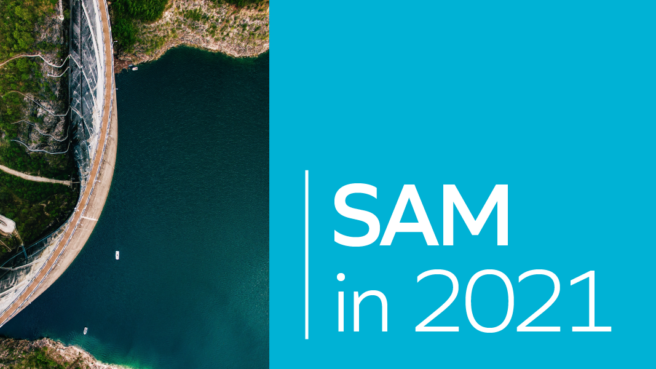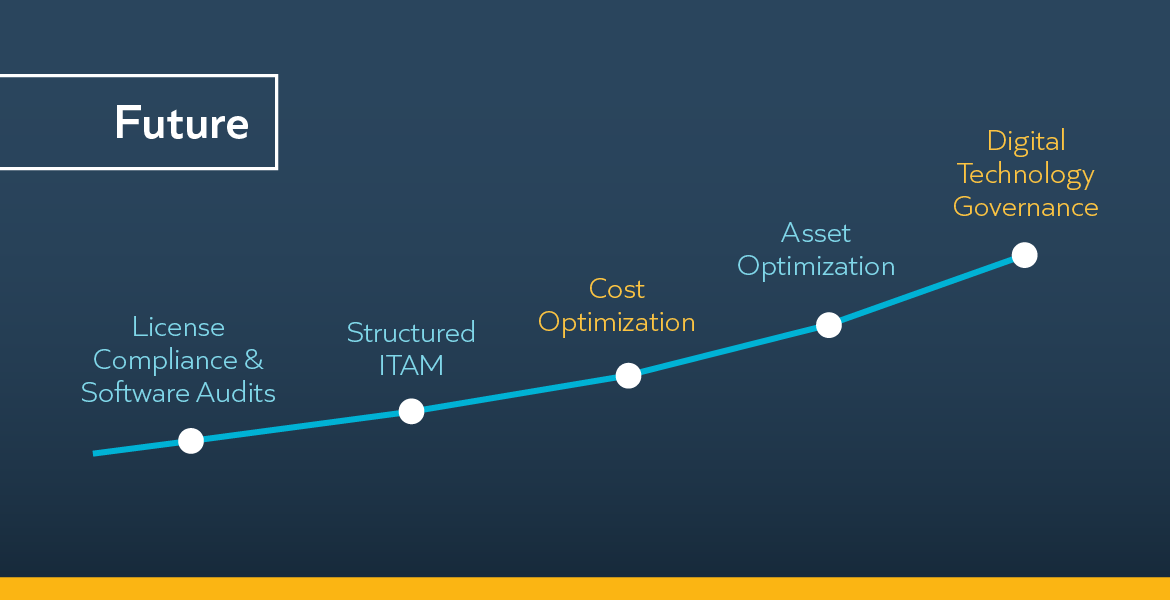SAM in 2021: What’s Your Maturity Level?

In today’s tenuous economic climate, most organizations are focused on how they can optimize costs while still retaining all their necessary applications. To exercise caution with the purse strings, savvy companies are turning to software asset management (SAM) programs. A strong SAM strategy will help you gain control of your costs, improve your software security, and minimize costly regulatory and compliance risks.
But as you look at your software landscape, you can see the signs of a rapidly accelerated digital transformation. To support the shift to remote and hybrid work, new SaaS applications were likely adopted and (hastily provisioned) legacy hardware and software systems were expanded. The resulting license compliance risks are enormous. Plus, there’s a whole host of new and growing cybersecurity vulnerabilities. Where do you even begin?
Assess your current SAM maturity
Your first step forward in managing a sprawling IT landscape is determining your current SAM maturity. For a quick, easy start to assessing maturity, try our Software Savings Calculator. This free, confidential tool will help break down your current situation and provide real insight into the savings you will realize when you implement a strategic SAM program over the course of several years.
With the cost savings assessment completed, it’s time to determine where you stand on the below ITAM/SAM maturity curve.

The descriptions below will help you map where you are in your SAM journey, according to our curve, so you can get a clear picture of where you are now and what you’d like to achieve.
This is a reactive phase where the approach to ITAM is risk-based. In most organizations, audits are the key driver.
Your ITAM now has governance, sponsorship, accountability, stakeholder engagement, core processes and responsibilities mapped with people and tools in place to support the majority of technology assets.
At this stage, waste is identified and actions are put in place to cut it. Recycling and re-harvesting activities are fully running and data is being shared with procurement. Insights directly inform your processes.
ITAM moves from taking a cost-based view of technology assets to a value-based approach. Assets are managed based on the value driven from the business processes they support and the information that they contain and communicate.
Surprisingly, at the top of the ITAM maturity curve you won’t see an IT-focused discipline, but rather a core business enabler. At this stage, you’ll have fully established analytics and reporting, continuous monitoring, support for related activities such as cybersecurity, governance & risk, business-user self-service and engagement across the C-suite. ITAM is focused on business priorities, supporting growth, innovation and efficiency across the organization, not just within IT.
It is possible you are doing a few things across multiple categories. And that’s fine; every organization is different! The important thing is to assess overall maturity and set goals for future growth.
Start with visibility
Regardless of where you stand on the maturity curve, you will see that any move up requires strong asset visibility. Whether it is installed software, data center software/hardware, mobile, or cloud, asset visibility means understanding what you already have, what is being used by whom and for what purpose. This depth of perspective is what we call, technology intelligence.
Understanding your entitlements and what is installed is a start. But the real value comes when you understand what you are using. Armed with usage information, you can compare purchases and usage, identifying areas of significant potential cost savings such as unused licenses, excess hardware and over-spec’d data center hardware.
SAM will help you eliminate redundant applications, reclaim and re-allocate unused software licenses, reduce unnecessary maintenance expense and streamline your audit defense. You may choose to cut your IT spending this year in response to the evolving business landscape. Or, if you’re like many others, you may decide to ramp up your spending to digitally transform your business. Either way, SAM will help you maximize your current spend and prevent unwelcome audit surprises. The best way to begin this strategic shift is with an assessment of your current maturity.
This post is the first in a series of articles on SAM. Watch for future posts that will include insights on roles and responsibilities, technology considerations and how-to’s on implementation.